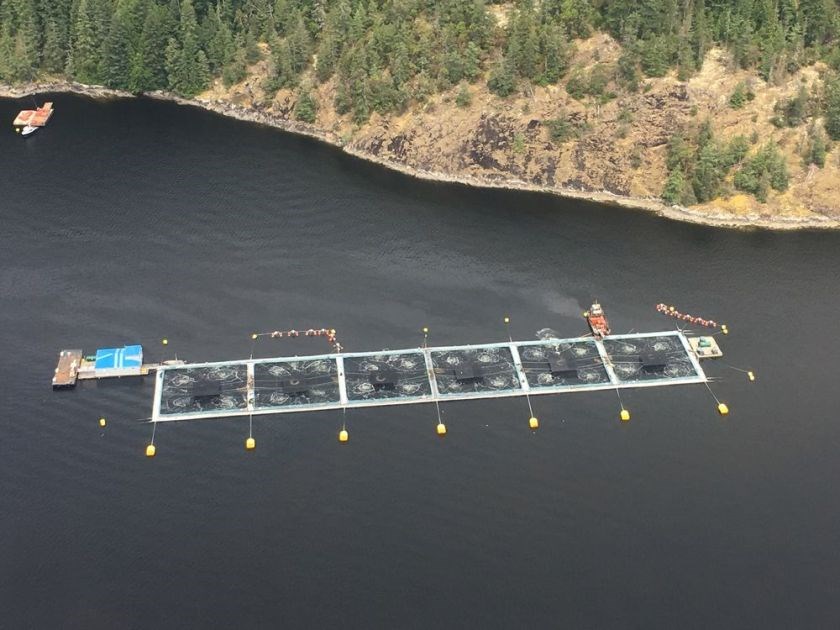Algae blooms killed around 250,000 fish at two B.C. fish farms last week, according to one of the largest aquaculture companies in the province.
About half of the fish at Grieg Seafood’s farms in Jervis Inlet died from the harmful blooms of Heterosigma algae, according to a release by the company. Because the algae was in “extraordinarily high concentration” and spread throughout the water, protective measures could not prevent the extensive kill, it said.
Rocky Boschman, the managing director of Grieg Seafood, explained that spines and spinules on the microscopic algae can damage the gills of salmon.
“It’s not about causing some destruction to internal organs or to the flesh. It’s about irritating the gills to the point that the fish’s own mucous response is its downfall,” he said.
The blooms are now dissipating, but there are still elevated counts of algae in the area, Boschman said, adding that the company would continue to monitor the problem around the clock.
The surviving fish will remain in the pens, where they will be fed and raised until their planned harvest in the latter half of the year, Boschman said.
The kill left the company with about 1,000 tonnes of dead fish to dispose of. Much of the organic waste from the company goes to composting companies on the Sunshine Coast and Vancouver Island, where it is mixed with wood waste and turned into soil, Boschman said.
“It’s kind of a beautiful way of solving two problems — wood waste from the forestry industry and mortalities from the salmon farming industry — and it creates a product that people really can’t get enough of,” he said.
Animal rendering and oil disposal company West Coast Reduction will take some of the remaining waste, he added.
Large Heterosigma algae blooms have appeared annually in the region for most of the last 20 years, but they have been absent during the last three, said Svetlana Esenkulova, with the Pacific Salmon Foundation.
The blooms typically last only a couple of days, but they can be persistent and stick around for several weeks, she said. Instances of the harmful Heterosigma blooms are believed to be increasing due to climate change, but neither the blooms nor fish affected by them are harmful to people, she said.
Esenkulova said she personally believes that wild salmon could also be killed by Heterosigma blooms.
Kristi Miller-Saunders, a head of molecular genetics at the Department of Fisheries and Oceans, said it is difficult to understand the impacts of something like the algae in question in wild salmon because their mortality is not observed.
“There are some in the scientific community who believe they would avoid areas with harmful algal bloom events, but they would have to be able to recognize them as that,” she said.
In contrast, “salmon on a farm is a canary in a coal mine,” so it is possible to observe the impacts of harmful algal blooms on those fish, said Miller-Saunders, who was widely reported as having been muzzled by the federal Conservative government several years ago after producing research on weakened wild salmon on the West Coast.
The fisheries ministry and the Pacific Salmon Foundation are now working together to investigate the effects of harmful algae in wild salmon.
Miller-Saunders said fish farms don’t contribute to algae blooms, adding: “I don’t think we know of any evidence necessarily to support or refute that question.”
Grieg Seafood is insured, and its costs for the incident including deductible would be around $4 million, according to the company.



